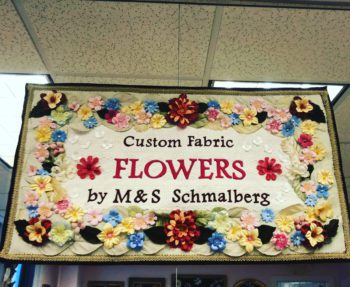
On gray winter afternoon, the interior of M & S Schmalberg, the last remaining custom artificial flower flower business in the Garment District, is bursting with color and tactile delights. Roses, peonies, dahlias, hibiscus, and lilies of the valley line the walls and burst from cardboard boxes.

The company, founded in 1916, is now in its fourth generation. In the Garment District’s heydey, there were ten to fifteen similar businesses; only M & S Schmalberg remains. Like many such factories in the neighborhood, it is located on the upper floor of an anonymous side-street office building. M & S Schmalberg is the oldest and last custom flower business in the country, a rare example of “a domestic factory surviving in an ‘import world,'” as its website puts it. Every last petal, leaf, and stem is made by hand, with the help of vintage tools and machines, right on West Thirty-Sixth Street.

Despite being surrounded by blooms, Adam Brand, the company’s vice-president, admits he has trouble pronouncing the word horticultural, but he’s the only person in the business who knows how to use a computer—essential since the company started selling its flowers on Amazon and through its own website. Brand’s favorite creations are those that have a story behind them: like the “eternal bouquet” a bride asked him to construct from her grandmother’s wedding dress, and bespoke flowers the company has fashioned from materials as varied as a military uniform, maps, a pet python’s skin, and closet collections of old umbrellas and plastic grocery bags.
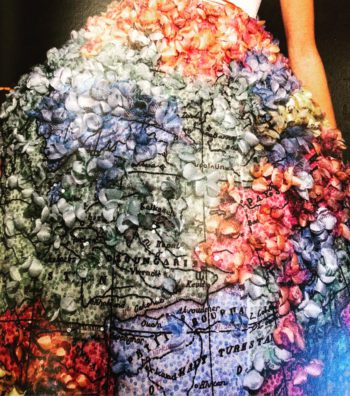
Adam says that clients supply their own fabric 90 percent of the time. Even though the flowers themselves are made in New York City, he admits that most of the fabric used is made in South Korea. Blooms cost between $5 and $25 each, priced not by size but by how complicated they are to create. A giant chrystanthemum might be cheaper than a lily of the valley, with its infinitesimal bell-shaped flowers strung from a thin wire.
The process begins with starching the fabric and and hanging it on wooden racks to dry.
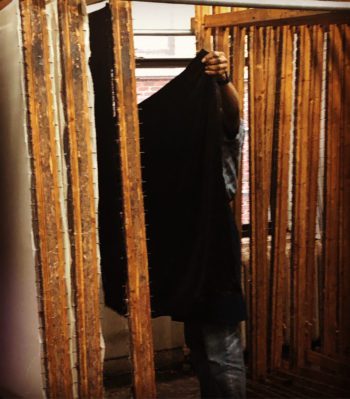
Layers of the stiff fabric are then stacked to be cut through with a metal die.
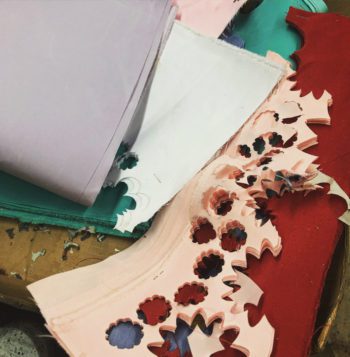
M & S Schmalerg’s collection of vintage iron dies is a sight to behold: shelf upon shelf of every conceivable flower in every size. Most are about a hundred years old, and many were forged by blacksmiths in Eastern Europe. No one makes dies like these anymore, and they are the heart of the business, the place each flower is born.
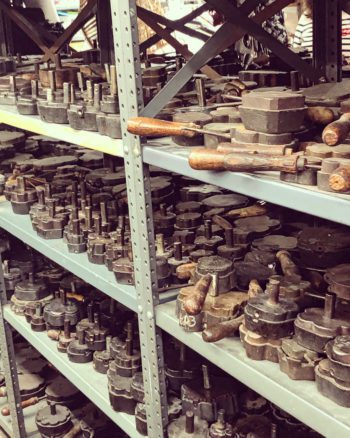
Once the correct die is selected, a piece of foam sponge is placed inside to keep the cut flowers from getting stuck, much as paper hole punchings get jammed in a hole puncher.

In the old days, a flower maker would place the die on the fabric and punch it through the layers with a rubber hammer. The fabric is still placed by hand in each die, but a heavy iron machine does the punching. With a whir and an oily cranking sound, the machine pumps down several times over the die, pressing it through the fabric layers.
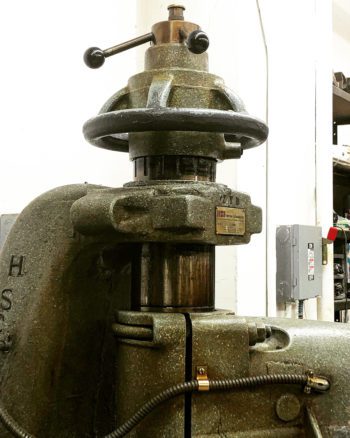
A palimpsest of flower footprints is left behind.
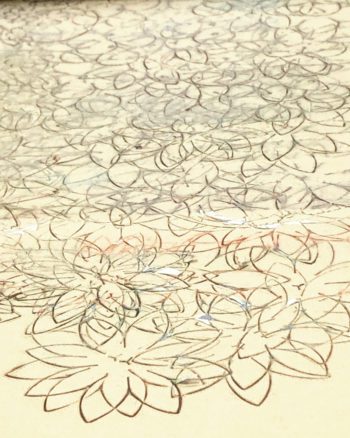
Next, the sandwich of fabric layers gets transferred to a “veiner,” another die that has crenellations in it to make the veins and wrinkles in each flower petal.
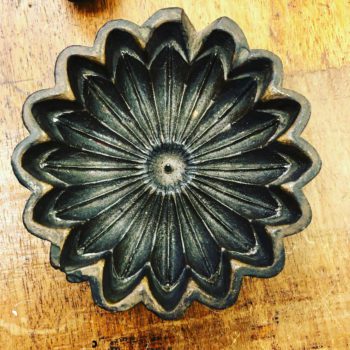
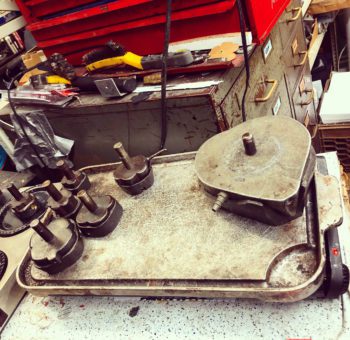
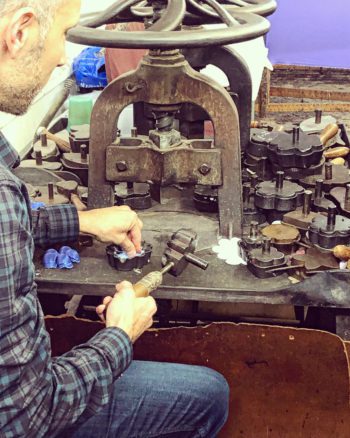
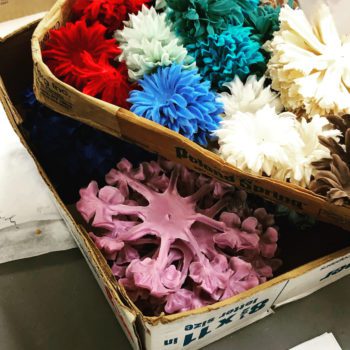 The fabric layers are splayed atop one another, folded, or strung onto a piece of wire around a center bud. Eventually, stems, clips, pins, magnets, and buttons are attached.
The fabric layers are splayed atop one another, folded, or strung onto a piece of wire around a center bud. Eventually, stems, clips, pins, magnets, and buttons are attached.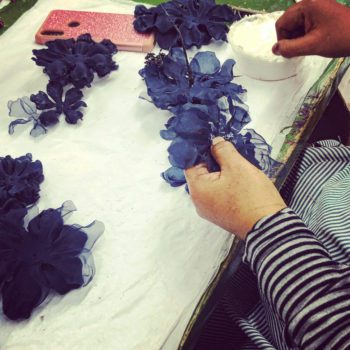



 Sense & the City is a monthly blog exploring the hidden corners of New York City. Each month’s post is devoted to one of the five senses. Receive daily sensory impressions via Instagram @senseandthecity.
Sense & the City is a monthly blog exploring the hidden corners of New York City. Each month’s post is devoted to one of the five senses. Receive daily sensory impressions via Instagram @senseandthecity.


1 thought on “SIGHT: M & S Schmalberg Custom Flowers”
Well done, I could not have said or explained our 106 year old 4th generation Family business and better. Adam makes me so Proud everyday and I am happy that our staff , some with over 40 years working with us has become part of the family:)
Adams Dad, Warren